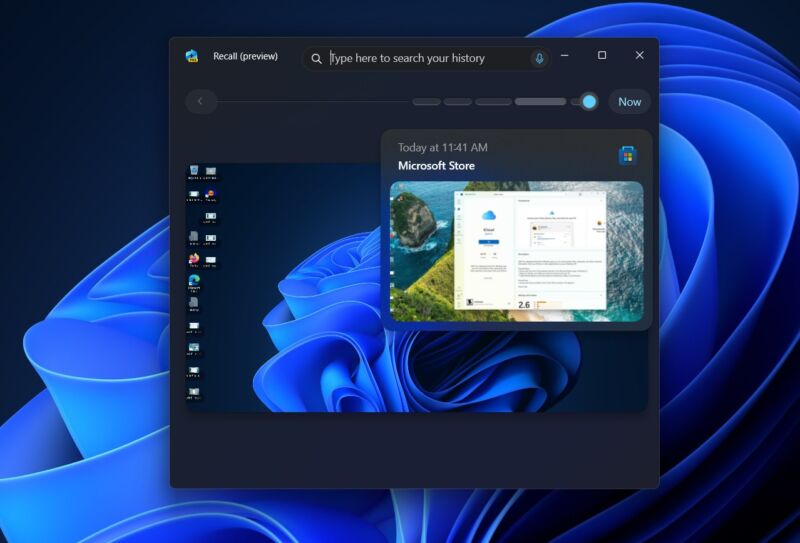
In today's digital age, where data breaches and cyber threats are a constant concern, staying informed and educated about cybersecurity is more crucial than ever. Whether you're an IT professional, a business owner, or simply someone interested in safeguarding personal information, understanding the complexities of cybersecurity is essential. But with the vast amount of information available, where should you start?
That's where this list comes in! The Cyber Express has compiled a selection of 15 cybersecurity books that are not only informative but also insightful and engaging.
This curated list of the best cybersecurity books equips you with the insights you need to stay ahead of the curve. Whether you're a seasoned professional or a curious beginner, you'll find titles that unveil the hacker's mindset, delve into the latest threats, and provide practical tools to fortify your defenses.
So, get ready to expand your knowledge and sharpen your cybersecurity skills as we turn the pages of these 15 best cybersecurity books.
Best Cybersecurity Books for Beginners
Cybersecurity for Dummies by Joseph Steinberg
[caption id="attachment_69206" align="aligncenter" width="816"]

Source: Amazon[/caption]
Cybersecurity for Dummies, authored by Joseph Steinberg, is a comprehensive guide for anyone looking to safeguard themselves or their organizations against
cyber threats. Steinberg, a prominent figure in the cybersecurity industry for nearly 25 years, brings his wealth of experience and expertise to this book.
Cybersecurity for Dummies covers a wide range of topics, starting with the basics of cybersecurity and the various threats that exist in the digital realm. Readers will learn about the who and why behind cybersecurity threats, gaining valuable insights into the minds of cybercriminals.
From there, the book dives into fundamental cybersecurity concepts, providing readers with the knowledge they need to identify, protect against, detect, and respond to cyber threats effectively.
Whether you're a business owner, an IT professional, or a concerned individual, Cybersecurity for Dummies
offers practical advice on how to fortify your defenses and mitigate risks. It also explores cybersecurity careers, making it a valuable resource for those considering a career in this field.
Hacking For Dummies by Kevin Beaver
[caption id="attachment_69207" align="aligncenter" width="816"]

Source: Amazon[/caption]
Hacking For Dummies by Kevin Beaver provides a straightforward journey into cybersecurity essentials. This book equips readers with the skills to identify and fix network
vulnerabilities, ensuring their data remains secure.
Covering topics such as Wi-Fi network security and the
risks of remote work, Beaver's guide is invaluable for small business owners, IT professionals, and remote workers alike. With practical tips and accessible language, this
cybersecurity book is a must-read for anyone looking to enhance their cybersecurity knowledge and protect their data.
Hacking: The Art of Exploitation, 2nd Edition by Jon Erickson
[caption id="attachment_69208" align="aligncenter" width="788"]

Source: Amazon[/caption]
In Hacking: The Art of Exploitation, 2nd Edition, author Jon Erickson goes beyond basic hacking techniques. He explains the fundamentals of C programming from a hacker's perspective and provides a complete Linux programming and debugging environment. Readers learn to program in C, corrupt system memory, inspect processor registers, and outsmart security measures.
The
book covers remote server access, network traffic redirection, and encryption cracking. It's a must-read for anyone interested in understanding hacking from the ground up, regardless of their programming background.
Big Breaches: Cybersecurity Lessons for Everyone by Neil Daswani, Moudy Elbayadi
[caption id="attachment_69216" align="aligncenter" width="675"]

Source: Amazon[/caption]
This book is an engaging exploration of major security breaches and their technical aspects, covering topics like phishing,
malware, and software vulnerabilities. The book offers industry insider knowledge, providing insights into real-world cases such as breaches at Target, JPMorgan Chase, and Equifax.
It's a must-read for anyone interested in cybersecurity, offering valuable lessons and practical advice. Whether you're an existing professional or someone seeking to understand cybersecurity basics, this
book equips you with the essential knowledge to move forward successfully.
It's ideal for existing leadership, professionals, and those considering entering the field, providing insights into creating a culture of security and implementing effective cybersecurity measures.
Confident Cyber Security: The Essential Insights and How to Protect from Threats by Dr Jessica Barker
[caption id="attachment_69210" align="aligncenter" width="654"]

Source: Amazon[/caption]
Confident Cyber Security: The Essential Insights and How to Protect from Threats by Dr. Jessica Barker equips readers with the skills needed to understand cybersecurity and start a successful career. From keeping secrets safe to protecting against manipulation, this book covers fundamentals with real-world case studies.
Updated topics like deepfakes and AI ensure relevance for all levels. Whether you're new to cybersecurity or a seasoned pro, this book is essential reading for safeguarding digital assets.
Gray Hat Hacking: The Ethical Hacker's Handbook, Sixth Edition 6th Edition
[caption id="attachment_69214" align="aligncenter" width="827"]

Source: Amazon[/caption]
This book is a fully updated, industry-standard security resource authored by Allen Harper, Ryan Linn, Stephen Sims, Michael Baucom, Huascar Tejeda, Daniel Fernandez, and Moses Frost. This book offers practical, step-by-step guidance on fortifying computer networks using effective
ethical hacking techniques.
It covers Internet of Things (IoT), mobile, and Cloud security, as well as penetration testing, malware analysis, and reverse engineering. With actionable methods, case studies, and testing labs,
it's an essential read for cybersecurity professionals, IT specialists, and anyone interested in combating cyber threats.
Cybersecurity Career Master Plan by Dr Gerald Auger, Jaclyn Jax Scott, Jonathan Helmus
[caption id="attachment_69212" align="aligncenter" width="830"]

Source: Amazon[/caption]
Cybersecurity Career Master Plan by Dr. Gerald Auger, Jaclyn Jax Scott, and Jonathan Helmus is a guide designed to help individuals enter and advance in cybersecurity. It covers essentials like cyber law, policy, and career paths. Readers learn about certifications, personal branding, and setting goals for career progression.
This
book is suitable for college graduates, military veterans, mid-career switchers, and aspiring IT professionals. It's a practical resource for anyone looking to start or excel in cybersecurity.
Best Cybersecurity Books for Experienced/Professionals
The Hacker Playbook 3: Practical Guide to Penetration Testing by Peter Kim
[caption id="attachment_69229" align="aligncenter" width="717"]

Source: Amazon[/caption]
This book is a must-read for cybersecurity professionals looking to advance their offensive skills. Kim explores real-world scenarios to address why security measures fail and introduces the concept of red-teaming to assess an organization's defenses. The
book covers advanced hacking techniques including exploitation, custom malware, and lateral movement, providing practical tools and insights.
Hackers & Painters: Big Ideas From The Computer Age by Paul Graham
[caption id="attachment_69230" align="aligncenter" width="663"]

Source: Amazon[/caption]
This book offers a fascinating insight into the world of computer programming and innovation. Graham, a prominent figure in the field of cybersecurity, explores the motivations and mindset of hackers—visionary thinkers unafraid to challenge convention.
With clear prose and historical examples, Graham navigates topics such as software design, wealth creation, and the open-source movement. This
book is essential reading for anyone interested in understanding the driving forces behind technology and its impact on society.
Applied Cryptography: Protocols, Algorithms, and Source Code in C by Bruce Schneier
[caption id="attachment_69232" align="aligncenter" width="834"]

Source: Amazon[/caption]
Authored by the world-renowned security technologist, it's hailed as the most definitive reference on cryptography ever published. The book covers cryptographic techniques, from basics to advanced, including real-world algorithms such as the Data Encryption Standard and RSA public-key cryptosystems.
It provides source-code listings and practical implementation advice, making it invaluable for programmers and electronic communications professionals.
Applied Cryptography is essential for anyone needing to
understand and implement cryptographic protocols, from digital signatures to secure keys. With its new Introduction by the author, this premium edition remains a must-have for all committed to computer and
cyber security.
Advanced Penetration Testing: Hacking the World’s Most Secure Networks by Wil Allsopp
[caption id="attachment_69233" align="aligncenter" width="816"]

Source: Amazon[/caption]
In this book, readers are guided through advanced techniques beyond conventional cybersecurity methods. This book covers complex attack simulations using social engineering, programming, and vulnerability exploits, providing insights not found in standard certification courses or defensive scanners.
Allsopp's multidisciplinary approach teaches readers how to discover and create attack vectors, establish command and control structures, and exfiltrate data even from organizations without direct internet connections. With custom coding examples and coverage of various programming languages and scanning tools, this book is essential for cybersecurity professionals looking to defend high-security networks against sophisticated threats.
It's particularly
relevant for professionals in financial institutions, healthcare, law enforcement, government, and other high-value sectors. "Advanced Penetration Testing" offers practical insights and techniques to stay ahead in today's complex threat landscape.
Mastering Hacking (The Art of Information Gathering & Scanning) by Harsh Bothra
[caption id="attachment_69234" align="aligncenter" width="651"]

Source: Amazon[/caption]
This book provides both technical and non-technical readers with simplified yet effective practices in cybersecurity. Intended solely for defensive purposes, it covers modern Penetration Testing Frameworks, the latest tools, vulnerability discovery, patching, responsible disclosure, and network asset protection.
This
book serves as a practical handbook for anyone interested in information security, offering real-life applications and essential techniques. Whether you're a cybersecurity enthusiast or a business owner, this book is a valuable resource for mastering the art of cybersecurity.
Practical Malware Analysis: The Hands-On Guide to Dissecting Malicious Software
[caption id="attachment_69236" align="aligncenter" width="775"]

Source: Amazon[/caption]
Practical Malware Analysis: The Hands-On Guide to Dissecting Malicious Software, by Michael Sikorski and Andrew Honig, is an essential resource for understanding and combating malware. It provides practical tools and techniques used by professional analysts to analyze, debug, and dissect malicious software. Readers learn to set up a safe virtual environment, extract network signatures, and use key analysis tools like IDA Pro and OllyDbg.
Through
hands-on labs and detailed dissections of real malware samples, readers gain invaluable skills to assess and clean their networks thoroughly. Whether you're securing one network or multiple, this book equips you with the fundamentals needed to succeed in malware analysis.
Metasploit: The Penetration Tester’s Guide
[caption id="attachment_69237" align="aligncenter" width="775"]

Source: Amazon[/caption]
Metasploit: The Penetration Tester’s Guide is authored by David Kennedy, Jim O'Gorman, Devon Kearns, and Mati Aharoni. This book is a must-read for security professionals and enthusiasts looking to master the Metasploit Framework.
It covers everything from the basics to advanced penetration testing techniques, including network reconnaissance, client-side attacks, and social-engineering attacks. Readers will learn to exploit vulnerabilities, bypass security controls, and integrate other tools like Nmap, NeXpose, and Nessus with Metasploit.
The book also delves into using the Meterpreter shell and writing custom post-exploitation modules and scripts whether securing networks or testing others', this guide provides the knowledge and skills needed to excel in cybersecurity.
Cybersecurity Blue Team Toolkit 1st Edition by Nadean H. Tanne
[caption id="attachment_69253" align="aligncenter" width="817"]

Source: Amazon[/caption]
In an era of frequent data breaches, this book provides a balanced and accessible approach to cybersecurity. Drawing on her extensive experience, Tanner covers key topics such as security assessment, defense strategies, offensive measures, and remediation. The book aligns with CIS Controls version 7 and explains the use of essential tools like NMAP, Wireshark, Metasploit, and many more.
This
toolkit is ideal for newcomers seeking a solid foundation and seasoned professionals looking to expand their expertise. Whether you're in IT or management, Tanner's guide offers the knowledge and tools needed to effectively protect against cyber threats.
From fundamental concepts to advanced ethical hacking techniques, these 15 cybersecurity books provide the knowledge and practical tools you need to stay ahead of the curve. So, dive into any of these must read cybersecurity books, sharpen your skills, and become an active participant in protecting yourself and the digital world around you.
Media Disclaimer: This report is based on internal and external research obtained through various means. The information provided is for reference purposes only, and users bear full responsibility for their reliance on it. The Cyber Express assumes no liability for the accuracy or consequences of using this information.

















 Define and Agree a Pipeline With Required Controls
Define and Agree a Pipeline With Required Controls










 The email arrives with a tempting subject line: "Order Verification SHEIN" – claiming to be from Shein customer service. But a closer look reveals a red flag – the sender's email address doesn't match Shein's official one.
The email excitedly announces you've received a mystery box from Shein. However, the included link won't bring you a surprise gift; it leads to a fake website designed to steal your personal information (a credential harvesting site).
This phishing attempt is quite transparent. It preys on your excitement by claiming you've won a prize and uses the trusted brand name "Shein" to gain your trust. However, a vigilant user can easily spot the
The email arrives with a tempting subject line: "Order Verification SHEIN" – claiming to be from Shein customer service. But a closer look reveals a red flag – the sender's email address doesn't match Shein's official one.
The email excitedly announces you've received a mystery box from Shein. However, the included link won't bring you a surprise gift; it leads to a fake website designed to steal your personal information (a credential harvesting site).
This phishing attempt is quite transparent. It preys on your excitement by claiming you've won a prize and uses the trusted brand name "Shein" to gain your trust. However, a vigilant user can easily spot the 





 Source: Amazon[/caption]
Cybersecurity for Dummies, authored by Joseph Steinberg, is a comprehensive guide for anyone looking to safeguard themselves or their organizations against
Source: Amazon[/caption]
Cybersecurity for Dummies, authored by Joseph Steinberg, is a comprehensive guide for anyone looking to safeguard themselves or their organizations against  Source: Amazon[/caption]
Source: Amazon[/caption]
 Source: Amazon[/caption]
In Hacking: The Art of Exploitation, 2nd Edition, author Jon Erickson goes beyond basic hacking techniques. He explains the fundamentals of C programming from a hacker's perspective and provides a complete Linux programming and debugging environment. Readers learn to program in C, corrupt system memory, inspect processor registers, and outsmart security measures.
The
Source: Amazon[/caption]
In Hacking: The Art of Exploitation, 2nd Edition, author Jon Erickson goes beyond basic hacking techniques. He explains the fundamentals of C programming from a hacker's perspective and provides a complete Linux programming and debugging environment. Readers learn to program in C, corrupt system memory, inspect processor registers, and outsmart security measures.
The  Source: Amazon[/caption]
This book is an engaging exploration of major security breaches and their technical aspects, covering topics like phishing,
Source: Amazon[/caption]
This book is an engaging exploration of major security breaches and their technical aspects, covering topics like phishing,  Source: Amazon[/caption]
Confident Cyber Security: The Essential Insights and How to Protect from Threats by Dr. Jessica Barker equips readers with the skills needed to understand cybersecurity and start a successful career. From keeping secrets safe to protecting against manipulation, this book covers fundamentals with real-world case studies.
Source: Amazon[/caption]
Confident Cyber Security: The Essential Insights and How to Protect from Threats by Dr. Jessica Barker equips readers with the skills needed to understand cybersecurity and start a successful career. From keeping secrets safe to protecting against manipulation, this book covers fundamentals with real-world case studies.
 Source: Amazon[/caption]
This book is a fully updated, industry-standard security resource authored by Allen Harper, Ryan Linn, Stephen Sims, Michael Baucom, Huascar Tejeda, Daniel Fernandez, and Moses Frost. This book offers practical, step-by-step guidance on fortifying computer networks using effective
Source: Amazon[/caption]
This book is a fully updated, industry-standard security resource authored by Allen Harper, Ryan Linn, Stephen Sims, Michael Baucom, Huascar Tejeda, Daniel Fernandez, and Moses Frost. This book offers practical, step-by-step guidance on fortifying computer networks using effective  Source: Amazon[/caption]
Cybersecurity Career Master Plan by Dr. Gerald Auger, Jaclyn Jax Scott, and Jonathan Helmus is a guide designed to help individuals enter and advance in cybersecurity. It covers essentials like cyber law, policy, and career paths. Readers learn about certifications, personal branding, and setting goals for career progression.
This
Source: Amazon[/caption]
Cybersecurity Career Master Plan by Dr. Gerald Auger, Jaclyn Jax Scott, and Jonathan Helmus is a guide designed to help individuals enter and advance in cybersecurity. It covers essentials like cyber law, policy, and career paths. Readers learn about certifications, personal branding, and setting goals for career progression.
This  Source: Amazon[/caption]
This book is a must-read for cybersecurity professionals looking to advance their offensive skills. Kim explores real-world scenarios to address why security measures fail and introduces the concept of red-teaming to assess an organization's defenses. The
Source: Amazon[/caption]
This book is a must-read for cybersecurity professionals looking to advance their offensive skills. Kim explores real-world scenarios to address why security measures fail and introduces the concept of red-teaming to assess an organization's defenses. The  Source: Amazon[/caption]
This book offers a fascinating insight into the world of computer programming and innovation. Graham, a prominent figure in the field of cybersecurity, explores the motivations and mindset of hackers—visionary thinkers unafraid to challenge convention.
With clear prose and historical examples, Graham navigates topics such as software design, wealth creation, and the open-source movement. This
Source: Amazon[/caption]
This book offers a fascinating insight into the world of computer programming and innovation. Graham, a prominent figure in the field of cybersecurity, explores the motivations and mindset of hackers—visionary thinkers unafraid to challenge convention.
With clear prose and historical examples, Graham navigates topics such as software design, wealth creation, and the open-source movement. This  Source: Amazon[/caption]
Authored by the world-renowned security technologist, it's hailed as the most definitive reference on cryptography ever published. The book covers cryptographic techniques, from basics to advanced, including real-world algorithms such as the Data Encryption Standard and RSA public-key cryptosystems.
It provides source-code listings and practical implementation advice, making it invaluable for programmers and electronic communications professionals.
Applied Cryptography is essential for anyone needing to
Source: Amazon[/caption]
Authored by the world-renowned security technologist, it's hailed as the most definitive reference on cryptography ever published. The book covers cryptographic techniques, from basics to advanced, including real-world algorithms such as the Data Encryption Standard and RSA public-key cryptosystems.
It provides source-code listings and practical implementation advice, making it invaluable for programmers and electronic communications professionals.
Applied Cryptography is essential for anyone needing to  Source: Amazon[/caption]
In this book, readers are guided through advanced techniques beyond conventional cybersecurity methods. This book covers complex attack simulations using social engineering, programming, and vulnerability exploits, providing insights not found in standard certification courses or defensive scanners.
Allsopp's multidisciplinary approach teaches readers how to discover and create attack vectors, establish command and control structures, and exfiltrate data even from organizations without direct internet connections. With custom coding examples and coverage of various programming languages and scanning tools, this book is essential for cybersecurity professionals looking to defend high-security networks against sophisticated threats.
It's particularly
Source: Amazon[/caption]
In this book, readers are guided through advanced techniques beyond conventional cybersecurity methods. This book covers complex attack simulations using social engineering, programming, and vulnerability exploits, providing insights not found in standard certification courses or defensive scanners.
Allsopp's multidisciplinary approach teaches readers how to discover and create attack vectors, establish command and control structures, and exfiltrate data even from organizations without direct internet connections. With custom coding examples and coverage of various programming languages and scanning tools, this book is essential for cybersecurity professionals looking to defend high-security networks against sophisticated threats.
It's particularly  Source: Amazon[/caption]
This book provides both technical and non-technical readers with simplified yet effective practices in cybersecurity. Intended solely for defensive purposes, it covers modern Penetration Testing Frameworks, the latest tools, vulnerability discovery, patching, responsible disclosure, and network asset protection.
This
Source: Amazon[/caption]
This book provides both technical and non-technical readers with simplified yet effective practices in cybersecurity. Intended solely for defensive purposes, it covers modern Penetration Testing Frameworks, the latest tools, vulnerability discovery, patching, responsible disclosure, and network asset protection.
This  Source: Amazon[/caption]
Practical Malware Analysis: The Hands-On Guide to Dissecting Malicious Software, by Michael Sikorski and Andrew Honig, is an essential resource for understanding and combating malware. It provides practical tools and techniques used by professional analysts to analyze, debug, and dissect malicious software. Readers learn to set up a safe virtual environment, extract network signatures, and use key analysis tools like IDA Pro and OllyDbg.
Through
Source: Amazon[/caption]
Practical Malware Analysis: The Hands-On Guide to Dissecting Malicious Software, by Michael Sikorski and Andrew Honig, is an essential resource for understanding and combating malware. It provides practical tools and techniques used by professional analysts to analyze, debug, and dissect malicious software. Readers learn to set up a safe virtual environment, extract network signatures, and use key analysis tools like IDA Pro and OllyDbg.
Through  Source: Amazon[/caption]
Metasploit: The Penetration Tester’s Guide is authored by David Kennedy, Jim O'Gorman, Devon Kearns, and Mati Aharoni. This book is a must-read for security professionals and enthusiasts looking to master the Metasploit Framework.
It covers everything from the basics to advanced penetration testing techniques, including network reconnaissance, client-side attacks, and social-engineering attacks. Readers will learn to exploit vulnerabilities, bypass security controls, and integrate other tools like Nmap, NeXpose, and Nessus with Metasploit.
The book also delves into using the Meterpreter shell and writing custom post-exploitation modules and scripts whether securing networks or testing others', this guide provides the knowledge and skills needed to excel in cybersecurity.
Source: Amazon[/caption]
Metasploit: The Penetration Tester’s Guide is authored by David Kennedy, Jim O'Gorman, Devon Kearns, and Mati Aharoni. This book is a must-read for security professionals and enthusiasts looking to master the Metasploit Framework.
It covers everything from the basics to advanced penetration testing techniques, including network reconnaissance, client-side attacks, and social-engineering attacks. Readers will learn to exploit vulnerabilities, bypass security controls, and integrate other tools like Nmap, NeXpose, and Nessus with Metasploit.
The book also delves into using the Meterpreter shell and writing custom post-exploitation modules and scripts whether securing networks or testing others', this guide provides the knowledge and skills needed to excel in cybersecurity.
 Source: Amazon[/caption]
In an era of frequent data breaches, this book provides a balanced and accessible approach to cybersecurity. Drawing on her extensive experience, Tanner covers key topics such as security assessment, defense strategies, offensive measures, and remediation. The book aligns with CIS Controls version 7 and explains the use of essential tools like NMAP, Wireshark, Metasploit, and many more.
This
Source: Amazon[/caption]
In an era of frequent data breaches, this book provides a balanced and accessible approach to cybersecurity. Drawing on her extensive experience, Tanner covers key topics such as security assessment, defense strategies, offensive measures, and remediation. The book aligns with CIS Controls version 7 and explains the use of essential tools like NMAP, Wireshark, Metasploit, and many more.
This 










